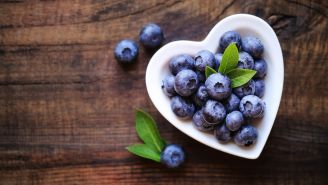In the United States alone, about 48 million people get sick from foodborne illnesses each year. But only 128,000 of these people are hospitalized as a result and even fewer—about 3,000—die from one of these infections, according to the Centers for Disease Control and Prevention (CDC).
One of the most common (and feared) culprits behind foodborne illness is the group of bacteria known as Escherichia coli, or E. coli. What you may not realize, however, is that harmless strains of this microorganism actually live in your intestines and in the intestines of animals. In fact, most types of E. coli don’t cause illness and could even help your body maintain a healthy digestive tract. Only some kinds make people sick.
“There are a lot of different strains of E. coli,” says Robin Foroutan, an Integrative Dietitian Nutritionist spokesperson for the Academy of Nutrition and Dietetics. “But there are really only a few that are dangerous.”
Here’s what you need to know about E. coli and how to avoid infection with dangerous strains of the bacteria.
How you can get sick
Among the most dangerous types of E. coli that have been tied to outbreaks of foodborne illness in the U.S. is O157:H7. This strain of the bacteria can produce a dangerous toxin in the body called Shiga. It lives in the intestines of farm animals including cattle, sheep and goats, and we come into contact with it in more ways than you might realize. (It’s worth noting that this type of bacteria differs from enterotoxigenic E. coli (ETEC), also known as traveler’s diarrhea. Food and water can be contaminated with ETEC from human or animal feces. It most commonly affects children living in developing countries and people traveling abroad.)
Ground beef can become tainted with E. coli if bacteria from animal intestines comes into contact with meat. E. coli can also live on a cow’s udders, so if you choose to drink unpasteurized milk, you may be putting yourself at risk of infection.
This harmful strain of E. coli can also make its way into produce when water sources that are contaminated with animal or human feces are used to irrigate crops. Some vegetables that are commonly affected include sprouts, lettuce, tomatoes and spinach. E. coli can even taint drinking water and swimming pools.
E. coli can be spread by human error as well. In many cases, infection occurs when someone doesn’t wash their hands properly before handling food or if meat is undercooked (more on that later).
Recognize the signs of infection
You may develop early warning signs of E. coli infections, such as mild stomach pain or diarrhea, as early as 12 to 24 hours after being exposed but there is a 10-day window when it’s still possible to become sick. As the infection progresses, symptoms may include severe stomach cramps, diarrhea with blood, vomiting and a low fever.
Children can continue to infect anyone who comes into contact with their stool for up to two weeks after they’ve recovered.
Those who believe they may be affected should write down what they ate in the week before they started to get sick. This will help inform health officials about the source and the scope of any potential outbreak.
Most people get better on their own within five to seven days, but the following red flags require immediate medical attention:
- Diarrhea that lasts for more than three days or comes with a high fever
- Bloody stool
- Excessive vomiting that leads to dehydration
Five to 10 percent of people with Shiga toxin-producing E. coli develop hemolytic uremic syndrome (HUS), a type of kidney failure associated with the infection. People younger than 5 and older than 65 as well as those with compromised immune systems are most susceptible. If you experience signs of this complication—decreased frequency of urination, extreme tiredness or loss of color in the cheeks or inner eyelids—seek medical help right away.
If you’re tracking E. coli outbreaks in the news, know that there’s a lag time between when people are sickened, when they report those illnesses and when the CDC reports confirmed cases. The agency points out that it takes between two and three weeks from the time a person becomes sick with E. coli and when that illness is reported to the government.
How is the infection treated?
If you have an E. coli O157:H7 infection, it’s unlikely you will be treated with antibiotics. These drugs are used to treat many bacterial infections, but they are typically not recommended as a treatment for this illness since the risks may outweigh any possible benefits.
Some studies have suggested that giving patients with E. coli O157:H7 infection antibiotics could increase their risk for HUS.
Unfortunately, once you’re infected, there’s not much you can do besides staying hydrated and getting rest. “You could take an electrolyte formula as well, or even just put a pinch of salt into your water and drink that,” Foroutan suggests.
Prevention is key
You can take simple steps to protect yourself from harmful E. coli infections:
Wash your hands: Before you handle produce, make sure you’ve washed your hands with warm water and soap for at least 20 seconds. This is especially important if you handle dirty diapers or have recently petted animals, especially at the zoo. Want to make sure you’re washing long enough? Sing the alphabet while you do so.
Wash your produce correctly: “You can also have contamination with amoebas and protozoas and different kinds of microscopic parasitic organisms, so it's always a good idea to give your produce a nice rinse for about 30 seconds,” says Foroutan. The temperature of the water doesn’t really matter. Instead of running the produce under the faucet, try leaving it in a large bowl or agitating it in a salad spinner. After you remove the produce from the water, dry it with a clean paper towel or cloth.
Sprouts are a rare exception to this rule. Washing them won’t remove the bacteria—you either have to cook them or just not eat them to avoid the bacteria.
Don’t forget to wash fruits and veggies with a peel: Yes, that includes produce you are going to peel. “You really ought to wash everything really well, even things like melon,” says Foroutan. If there are E. coli bacteria on the rind, your knife can push them into the flesh, contaminating the inside from the outside.
Even pre-packaged veggies can be dirty: You might think pre-packaged lettuce is always already clean and ready to eat, but that’s not always the case. “It's tempting to skip the washing step, but it's still important to do that,” says Foroutan. Check the label to confirm whether the produce is pre-washed.
Splurge on a vegetable brush: For vegetables with a peel, you can use a brush to lightly scrub the outside. If you're getting produce straight from the farm, you might have to wash and brush it a few times to get all the sand and dirt off. After brushing it, run it under water for around 30 seconds. “That works well for carrots, squashes and winter squash, where you're not necessarily eating the outside,” says Foroutan.
Cook your meat thoroughly: Ground beef should be cooked to an internal temperature of at least 160 degrees Fahrenheit before being served. If your hamburger looks undercooked at a restaurant, send it back. Cook steaks and chops to at least 145 degrees, and any type of poultry to at least 165 degrees.
Avoid certain foods: Raw milk, some ciders, certain soft cheeses and other unpasteurized foods may carry dangerous bacteria that cause foodborn illness, including E. coli.






